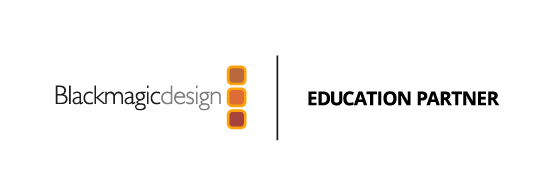| Week |
Subject |
Related Preparation |
| 1) |
General Information About the Course.
Interface Customization.
Keyboard Customization. |
The Editor’s Guide to DaVinci Resolve 18.
The Beginner’s Guide to DaVinci Resolve 18.
|
| 2) |
Detailed examination of the Media Pool Window.
Project Management: Folders, Keywords, Smart Folders.
Renaming clips with keywords.
Media Management.
Project Archiving.
Importing projects and sequences.
Reconnecting offline media.
Tracks (Sellection, Lock, Mute, Solo etc.). |
The Editor’s Guide to DaVinci Resolve 18.
The Beginner’s Guide to DaVinci Resolve 18.
|
| 3) |
Dynamic Trim- Slip-Slide.
Back-timed edit, Replace Edit, Ripple Overwrite.
Compound clips.
Using multiple sequences (stacked timelines).
|
The Editor’s Guide to DaVinci Resolve 18.
The Beginner’s Guide to DaVinci Resolve 18.
|
| 4) |
Cutting a Dramatic Scene.
Working with Separate Takes.
Editing for Continuity.
Comparing Different Takes.
Tidying Up the Audio.
Utilizing Split Edits.
Dynamic Trimming.
Filling the “Dead Air”.
|
The Editor’s Guide to DaVinci Resolve 18.
The Beginner’s Guide to DaVinci Resolve 18.
|
| 5) |
Inspector Effects
Transform
Dynamic Zoom
Cropping shots.
Camera stabilization.
Green Box Keying (3D Keyer FX).
Variable Speed Changes.
|
The Editor’s Guide to DaVinci Resolve 18.
|
| 6) |
Using Proxy Media.
Subtitle Track and Audio Transcription.
|
The Editor’s Guide to DaVinci Resolve 18.
The Beginner’s Guide to DaVinci Resolve 18.
|
| 7) |
Editing a commercial film. |
|
| 8) |
Midterm exam |
|
| 9) |
Audio synchronization.
Multicam Kurgusu
Switching Multicam Angles
Editing a Multicamera Music Video
Real-Time Multicamera Editing
Adjusting the Multicamera Edit.
Adjusting a Multicam Clip
|
The Editor’s Guide to DaVinci Resolve 18. |
| 10) |
Video Collage.
Compositing Using Traveling Mattes.
Creating Tiles with Video Collage.
|
The Editor’s Guide to DaVinci Resolve 18. |
| 11) |
Animation in the Edit Page.
Using Keyframes.
Animating text.
Animating Still Images.
|
The Editor’s Guide to DaVinci Resolve 18. |
| 12) |
Editing and Mixing Audio.
Balancing the Dialogue Clips.
Enhancing the Scene.
Panning Tracks in Acoustic Space.
Adding More Atmosphere.
Creating a Radio Effect.
Simplifying the Mix.
Mixing with the Mixer.
Using Buses for Alternative Mixes.
|
The Editor’s Guide to DaVinci Resolve 18. |
| 13) |
Delivering Projects.
Reformatting a Timeline for Different Aspect Ratios.
Reframing Shots.
Smart Reframe.
Customizing Deliver Page Presets.
Exporting AAF for Pro Tools.
Exporting DCP.
|
The Editor’s Guide to DaVinci Resolve 18. |
| 14) |
Adding Subtitles.
Importing Subtitle Files.
Adjusting Subtitles.
Styling Subtitles.
Exporting with Subtitles.
Exporting Audio Tracks.
Changing and Rendering Jobs from Multiple Projects.
Media Managing Timelines.
|
The Editor’s Guide to DaVinci Resolve 18. |
| Course Notes / Textbooks: |
1. Film Kurgusu: Tarihi, Kuramı ve Tekniği, Cem Yıldırım, Urzeni Yayınları, 2019
2. The Beginner’s Guide to DaVinci Resolve 18, Chris Roberts and Simon Hall, Blackmagic Design Pty Ltd, 2023.
3. The Editor’s Guide to DaVinci Resolve 18, Chris Roberts, Blackmagic Design Pty Ltd, 2023. |
| References: |
1. Film Kurgusu: Tarihi, Kuramı ve Tekniği, Cem Yıldırım, Urzeni Yayınları, 2019
2. The Beginner’s Guide to DaVinci Resolve 18, Chris Roberts and Simon Hall, Blackmagic Design Pty Ltd, 2023.
3. The Editor’s Guide to DaVinci Resolve 18, Chris Roberts, Blackmagic Design Pty Ltd, 2023.
|
| |
Program Outcomes |
Level of Contribution |
| 1) |
Having the ability to master the production processes in the fields of Radio, Television and Cinema and to develop creative projects. |
5 |
| 2) |
The ability to evaluate the historical development of cinema and television with its artistic and technological dimensions. |
3 |
| 3) |
The ability to evaluate the concepts and theories of mass communication through a critical perspective and to understand the relationship between cultural, political, economic and technological developments. |
3 |
| 4) |
The ability to solve the problems encountered in the field of radio, television and cinema with a scientific approach. |
3 |
| 5) |
The ability to analyze the effects of the media on economic, political, socio-economic and social-psychological aspects in the historical process. |
3 |
| 6) |
The ability to learn and effectively use the devices and equipment used in all phases of the Cinema and Television production process. |
5 |
| 7) |
Ability to communicate with people at different stages of the production process and to make projects. |
5 |
| 8) |
The ability to explain the concept of ethics with a critical eye in the scientific, professional and cultural context. |
2 |
| 9) |
Ability to act individually and in accordance with team work in the production process in the field of Radio, Television and Cinema and to provide coordination in the working process |
5 |
| 10) |
The skill of knowing the types of television programs and analyzing the rhetoric of all kinds of television texts. |
2 |
| 11) |
To be able to master cinema history, its concepts and genres with its artistic and technological dimensions and its ability to criticize. |
2 |
| 12) |
The ability to use the knowledge and skills gained in theoretical and applied courses in the field of Radio, Television and Cinema to specialize in a particular field. |
5 |
